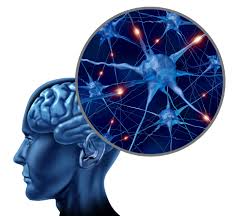|
Depression: a mental condition characterized by feelings of severe despondency and dejection, typically also with feelings of inadequacy and guilt, often accompanied by lack of energy and disturbance of appetite and sleep. In mainstream medicine there are 6 types of depression: clinical, chronic, atypical, manic, seasonal, and psychotic. Antidepressants are often the first treatment option prescribed yet they only effective in around one third of cases, and partially effective in another third. The other third of cases get no benefit at all. From a complementary therapist’s point of view, having seen many cases of depression come through my clinic door, there can never be a “one size fits all” treatment that cures depression. Every person is unique and what works for one person might not work for another. Inspired by a conversation with an acupuncture colleague of mine a few days ago, I thought it’d be useful to have another kind of diagnosis window for depression: one offered by the five elements (wood, fire, earth, metal, water). There is so much good information on the web (I love google), but below I’ve summarised what I have found in my research as ways to help yourself at home if you are struggling with depression. Please note that this information is not meant to take the place of valued guidance from your healthcare practitioner. It is merely additional resources to supplement you in your journey of depression. So what type of depressed are you and what can you do to help yourself, in addition to any current support you are getting?
Many thanks to Sarah Attwell-Griffiths for inspiring me to research this! You can find out more about her at Corinium Acupuncture.
 This blog of ten insights is inspired by the amazing Dr Gabor Mate who I had the privilege of hearing at the recent Breath of Life conference in London this May. #1 We need to look at the whole picture Gabor talked much about the interconnectedness of all things, and how, to understand anything, we need to always look at the whole picture. This is especially true in the realm of mental health. The human essence is basically and primitively an ensemble of human emotions (this statement brings some amusing images to mind!). A great film to watch that depicts this is ‘Inside Out’. #2 The Self is not static We think we can define Self... however the Self changes dependent on the situation/settings we find ourselves in – thus the Self is part of a larger context. It is not separate. What this points to is the multi-dimensional aspects of illness: social, psychological, biological etc. So can cancer be viewed not as a disease of the individual – but a reflection of our society? This is a very interesting question... #3 Developmental trauma happens even when bad things don’t It is possible to suffer from developmental trauma when something is withheld during childhood (love for instance) and not just when bad things happen (the more obvious abuse situations. The impact of the obvious abuse and the impact of the biological loss are indistinguishable in their affects. #4 Attachment is our most powerful biological drive Humans are creatures of attachment; it is our most powerful biological drive – even more than life itself to some extent (just look at how a mother my give her own life to save her childs). Without attachments we just do not live... #5 Diagnosis is just a description, not an explanation One thing that stood out for me is the ridiculousness of diagnosis. It does not explain things; it just describes it! A great way of summing up how displaced we are from the interconnectedness of health and wellbeing, how we look for quick fixes. Most physical illnesses originate in adaptations to early stress where a short term stress can lead to a long term trait. We can see this is certain patterns of multi generation issues. #6 Mental health starts in the womb The development of our brain architecture begins before birth and continues into adulthood... .thus pregnancy impacts on future mental health. The most important environmental factor is the quality of parental attunement: it literally shapes the child’s brain. Being emotionally and consistently available is the biggest gift a parent can give to a child. #7 Women as emotional stress absorbers Women traditionally have the role in a household of the emotional stress absorber for the family. In this modern age women find themselves still performing this role whilst at the same time having an economical role to play. This really resonated with me and explains much of the stress I see in my clients. #8 Children take it all personally When a mother is unhappy a child can only take that personally (it is the narcissistic time of life after all). Our brains cannot make sense of an attachment void. Core beliefs are formed during the early years; there are many adults with the unconscious core belief of not being wanted. #9 The move to a peer-oriented society In the animal kingdom we see how the young imprint and the drive for this. It is no different in the human realm. What is different however is that we are moving away from living in communal tribal groups and are now much more in a peer-oriented society. We do not yet know the impact long term of this upon future generations. Gabor argued that the compulsive use of digital media is all about attachment. Another sobering thought. #10 Building resilience But how do we build resilience? The presence of an empathic witness builds resilience. The roots of resilience are to be found in being understood by another. And there is always hope..there is the capacity for rewiring (neuroplasticity) – provided we provide the right conditions. |
|
May you walk in Beauty
|
Copyright of Ri Ferrier 2024
|

